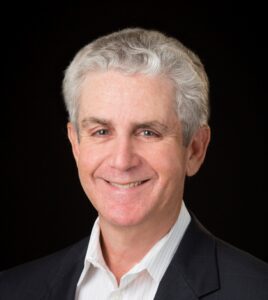
By Rick Weitzer
Principal
Prell Organization
rweitzer@prellorg.com

Rich Thau
Engagious
engagious.com
U.S. elections generate a lot of business for polling firms tracking the ongoing shifts in voter sentiment. For voters, the quantitative view of an election is most visible. Every day, one can find poll results with new sentiment counts.
Although qualitative insights don’t make as many headlines, they, too, are assessed throughout the U.S. election seasons—including this year’s high-attention presidential election, where swing voters were of high interest to pundits, politicians, the public, and other interested parties.
Political qualitative researcher Rich Thau was among the moderators who delved deeper during the election to understand the “whys” behind the poll numbers.
Thau is president of Engagious, a research firm that specializes in public policy message testing and message refinement for major trade associations, advocacy groups, and large corporations.
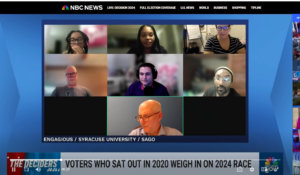 During the 2024 election, he applied his qualitative expertise to three election-related projects. As creator and moderator of the Swing Voter Project, in conjunction with the news site Axios, Thau conducted monthly online focus groups with swing state voters. For these groups, Thau said he recruited Trump-to-Biden voters between 2016 and 2020 because the movement from Trump to Biden is what made the difference in the swing states.
During the 2024 election, he applied his qualitative expertise to three election-related projects. As creator and moderator of the Swing Voter Project, in conjunction with the news site Axios, Thau conducted monthly online focus groups with swing state voters. For these groups, Thau said he recruited Trump-to-Biden voters between 2016 and 2020 because the movement from Trump to Biden is what made the difference in the swing states.
Thau was also the moderator of the 2024 Deciders, in partnership with NBC News. For that project, he conducted monthly focus groups with rotating categories of key voting blocs. For example, he recruited pro-choice female Trump voters in Pennsylvania and independent college students in Wisconsin.
Thau also conducted focus groups with voters in conjunction with NPR.
I interviewed Thau during the election season to get a sense of how he approaches qualitative research with voters and to get his thoughts on the value of qualitative research in elections.
Rick Weitzer: You recruit swing voters for your focus groups. How do you define swing voters?
Rich Thau: There are many different definitions of a swing voter. For this recent election cycle, we used a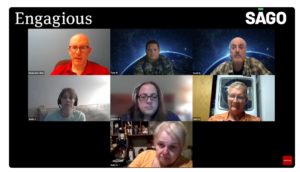 very simple one: people who voted for Trump in 2016 and then switched to vote for Biden in 2020. There are so many possible definitions. We stick to one that gives us consistency month after month and is reasonably recruitable.
very simple one: people who voted for Trump in 2016 and then switched to vote for Biden in 2020. There are so many possible definitions. We stick to one that gives us consistency month after month and is reasonably recruitable.
Rick: What do you think the incidence is among the population or among registered voters?
Rich: The numbers I’ve seen, there were roughly—nationally, not just in the swing states—4 percent of the people who voted for Biden in 2020 had voted for Trump in 2016. Just 3 million voters.
Rick: Do you start with a database that would make it easier to recruit that 4 percent?
Rich: My firm engages Sago, and we worked from their panel. I try to stay away from the “sausage factory” as the sausage is being made because I know what I’m good at. Beyond writing a screener, recruiting is not my strong point.
Rick: Do you ever have to reuse some of your participants because you start running into recruiting challenges?
Rich: I have, on occasion, with great reluctance, reused respondents (from) two, three, or four years before. I do not use people who participated within the past 12 months. But if I can’t find enough in a certain month, we’ll go back to the people we had a few years before. But I really, really don’t like to do that.
Rick: Are there any specific demos you recruit for, like a balance of age, gender, and ethnicity, or do you let it fall as it may?
Rich: It’s a hybrid. I try each month to make sure we have representation of people of color in the group. That’s important. We certainly have a mix of ages, although most of the respondents tend to be between 30 and 60. Not a lot of seniors are flipping from one party to the other between presidential elections. Getting people who voted in two consecutive elections can be a challenge with younger people who have a lower incidence of voting.
Rick: What about new voters or people in their 20s who are on the sidelines? Do you ever include them?
Rich: I don’t include them in the Swing Voter Project because they weren’t Trump to Biden. In a separate project we’re doing with NBC News, we did groups back in April with 16 college students in the University of Wisconsin system across five different campuses. They were all voting for the first time.
Rick: Do you use an articulation screen, a competitive screen, or a recent usage screen?
Rich: We have an articulation screen in the sense that we ask people, “Why’d you vote for Trump in 2016? Why’d you vote for Biden in 2020?” If they can’t come up with a reasonably plausible answer, we don’t recruit them. Having asked the screen and rescreen questions hundreds of times, there’s a very high level of consistency in the reasons they give. If they’re really struggling, it’s an indication something is wrong when it comes to what their past voting history is.
Rick: Are you concerned that you’ll get ringers like reporters, political operatives, or people scamming you for the incentives?
Rich: It is very hard to get through the screener because most people vote for the same party election after election. We’re not asking, “Are you a swing voter?” In the five-plus years I’ve been doing this, I’ve never knowingly had a journalist in the group who then wrote about the group.
Rick: TV and cable networks have often conducted what they call focus groups. We all have seen those and cringed when they use journalism techniques, not qualitative techniques. But, lately, I’ve seen that sometimes they use real moderators like you to conduct a real focus group. How do you explain that shift?
Rich: The only one I’ve ever seen on TV who’s a professional is Frank Luntz, who contributes to Fox, CBS, and CNN. Luntz is a very skilled moderator and also excellent at conducting focus groups on TV. He has found the sweet spot in the Venn diagram between those two. What he does makes for very good TV. He will focus-group 20 or 25 people all on one giant Zoom screen, which is something I don’t do.
Rick: I used to see a TV reporter interviewing a large group of voters sitting in a grandstand, but I don’t see that much anymore. I’m seeing more journalists adapting qualitative techniques; I see print journalists doing follow-up interviews with survey respondents. I don’t know exactly how they interview these people, but it feels to me that what they deliver is somewhat qualitative in nature. What do you think is driving this?
Rich: Despite all the attention that polls get, there’s still a sense in the news business that they’re missing something with polls, and qualitative research is important to give some color and understanding to the numbers.
There’s something more going on than just numbers. There’s a story here. News organizations like to be able to hear from real people. It helps attract viewers. There’s relatability between the viewer and the focus group respondent on TV. Among the news producers, focus groups are more realistic and more grounded. The “talking heads” have such a bizarre view of voters that bears no relationship to the reality of the voters I talk to every month.
Rick: I hear the political strategists (on TV) talking about what they saw in focus groups. When you have such a small sliver of persuadable voters, you can’t poll them very easily; it’s too expensive. Does this help qualitative have a bigger role in the media and in campaigns?
Rich: The news media realizes that covering focus groups or conducting focus groups is good for ratings. If it weren’t good for ratings, they wouldn’t be doing it. It enhances the quality of the news coverage and takes it away from exclusively being the purview of political consultants and talking heads who may or may not know what they’re talking about.
The campaigns are running qualitative research endlessly. They’re in the field all the time testing stuff, dial testing, or conducting focus groups. The reason the elections are so close is that both Republicans and Democrats are using modern research techniques to know exactly where the voters are—they’re not guessing. When spending hundreds of millions of dollars, their techniques are tried and tested.
Rick: I’ve noticed that you use projective exercises like sentence completion in which the participants have to insert a word into a blank spot in a provided sentence or statement. You also ask for one-word descriptions of public figures. Why do you think that this method is so powerful—and yet so simple—to reveal voters’ innermost feelings?
Rich: It’s an effective tool, but not the only tool. When I hear their answers, I’ll probe to understand more. I don’t want people to think, “That’s how he does all his focus groups.” The value of doing that is it’s a distillation.
I asked, “What’s the first thing that comes to mind when you think of Harris?” “What’s the first thing that comes to mind when you think of Trump?” It was very illuminating how they took a candidate and reduced them to a word or a phrase. It became abundantly clear that some of the words, especially when you listen to them in quick succession, have the effect of painting a picture.
Rick: It also has strategic implications for both parties.
Rich: When people describe Trump as corrupt or when they say electing Harris will result in the U.S. “sliding into socialism,” there’s a lot going on there. It gives you a sense of what’s top of mind when someone’s going into the voting booth. That’s where I find the value. It’s a shorthand, and like all shorthand, it’s incomplete, but it also illuminates.
Rick: Do you ever have an issue when the media, campaigns, or clients cherry-pick certain verbatim quotes to fit their own agenda? In politics, that’s the job of their strategists. What can you do about that?
Rich: If they’re doing live focus groups, you can’t control the narrative. The person sitting there is going to say what he or she is going to say. When it’s someone who’s going to cover it and write an article about it, we have conversations with the reporters. After the focus groups are done for the evening, we have a conversation: “What did you learn? What stood out to you? What’s new?”
Rick: Like a debrief.
Rich: A debrief, exactly. Just like I would do with a client. My role is not to steer their reporting. Ages ago, I was a reporter, and I didn’t want to be told what to write. I bring a former journalist’s mindset to my conversations. You have to figure out what’s newsworthy, but also what’s true to the research and not try to twist it.
To the credit of the people at the news organizations I’ve been working with and the other news organizations that pick up our stuff, generally speaking, they’re true to it. The one thing that really riles me is that all they’ll show is my question about a show of hands, like “How many people believe this?”
Rick: They’re counting.
Rich: The one time it happened with a particular news organization, I sent a quick note to the producer. I said, “The purpose of these focus groups is not to take a survey of six people. The purpose is to understand why those six people believe what they believe.” But everybody wants to know how many, and who’s going to win? But if you can understand how people think, you can start to infer how they might actually vote.
Rick: Political research, both qual and quant, is usually conducted under tremendous time pressure, and you deliver your video analysis within days of your fieldwork. How does that impact what you deliver, and how do you handle that pressure?
Rich: I learned as a journalist to write well quickly. With an editor standing over my shoulder saying he wants your story in half an hour, you’ve got to get it done. You cut to the chase. We finish the sessions at 9:30, we do a debrief from 9:30 to 9:45. It takes a little while for my team to get the audio transcripts, so by 10:45 to 11:00 pm, I’m ready to start my analysis. In the meantime, I’m thinking about what my angle is going to be, and I just crank it out.
Rick: Do you have a video editor working on it?
Rich: I send the highlights guidance to my video editor, to pull the clips in a certain sequence with time codes. It’s my narration, and then I’ll clip from the Rev transcript with the time code and stick it into the Word document. It’s literally a cut-and-paste exercise. All I have to decide is which clips I’m going to choose, which sequence I’m going to put them in, and how many of them to pull.
I’m thinking, what’s most newsworthy? What’s the thing at the top of the list that most people are going to be most interested in? What have I not covered before? The video editor is working all day today on what I sent her yesterday, and it typically takes her five to seven hours to pull it all together.
Rick: Are you talking about the main video you put on your website or the other nine or 10 that are shown below that?
Rich: All of that gets done in one day. The highlights video takes the most time because she’s got to pull a total of 30 or 40 different little clips and put them in sequence with a clean edit to each one of them and the narration that I filmed. I put a lot more time into focusing on that because that’s what most people end up watching. I know exactly how many people have seen it.
Rick: Do you think that political qualitative research is now getting more respect from candidates, strategists, media participants, and voters? If that’s true, what’s driving this dynamic?
Rich: I can judge from what I see news organizations doing with other people’s work and what they’re doing with mine. It is respected because, at least with my stuff, it’s being done by a professional. I’m not trying to advance an agenda. When I moderate, I do it in a pretty even-handed way. It’s not about me; it’s about the respondents. I’m not inserting my personal opinion into the moderating. I’ll do devil’s advocate exercises just to draw people out. But it’s not my opinion, it’s just the opposing point of view.
Rick: You state that upfront?
Rich: I let them know that it’s the devil’s advocate argument. It looks on TV very real, very genuine. I’m not telling the respondents what to say. TV networks and print organizations find value in hearing what real people are thinking. Focus groups are an early warning system. You’re going to see what the groups say erupt in public opinion in the following days and months.
The way I operate with these news organizations is that they’re not paying me. They’re getting free content. On balance, it’s a win for me, and the news organizations are getting good content.
I’m not looking to become famous doing this. If you watch my highlights video, I never mention my name. I’ve been doing this since March of 2019. I’ve never once said, “Hi, I’m Rich Thau.” I’m not doing this from a left or a right perspective.
Rick: I have no idea what your politics are, and that’s perfect. Thank you, Rich.
Qualology Hub:
PART 2 / SWING VOTERS: QRCA QCAST WITH RICK WEITZER AND RICH THAU
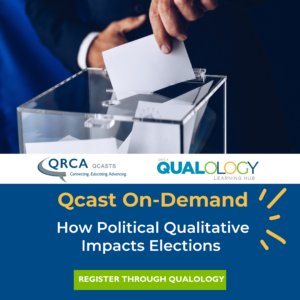
If you like this article’s topic, check out this Qcast in which Rick Weitzer moderates a panel with Rich Thau and NPR’s Susan Davis. Rich Thau, president of Engagious and moderator of the Swing Voter Project, conducted monthly focus groups with undecided voters. Susan Davis, Washington correspondent for NPR, is the media partner who sponsored—and reported on—some of these focus groups. This Qcast is a debrief of two focus groups that Thau moderated just weeks prior to the November 2024 election. The Qcast also includes video clips from these groups that provide an inside look on how qualitative research impacts politics.
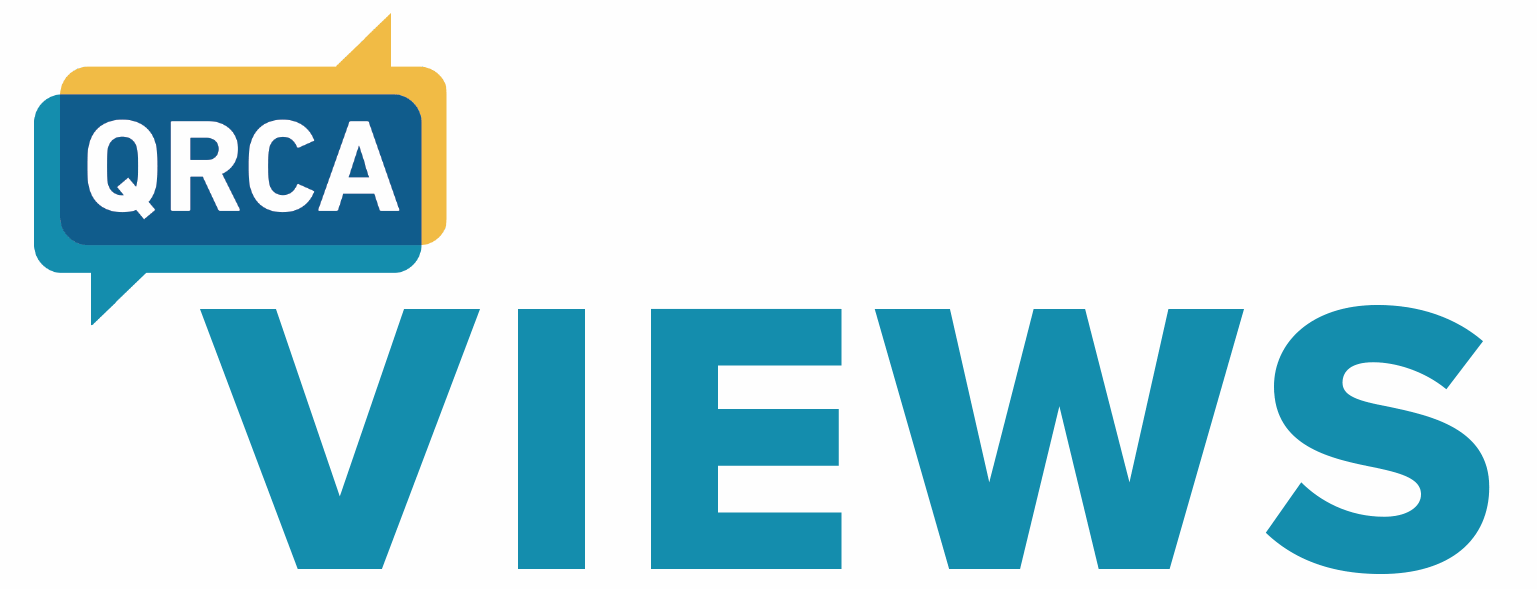
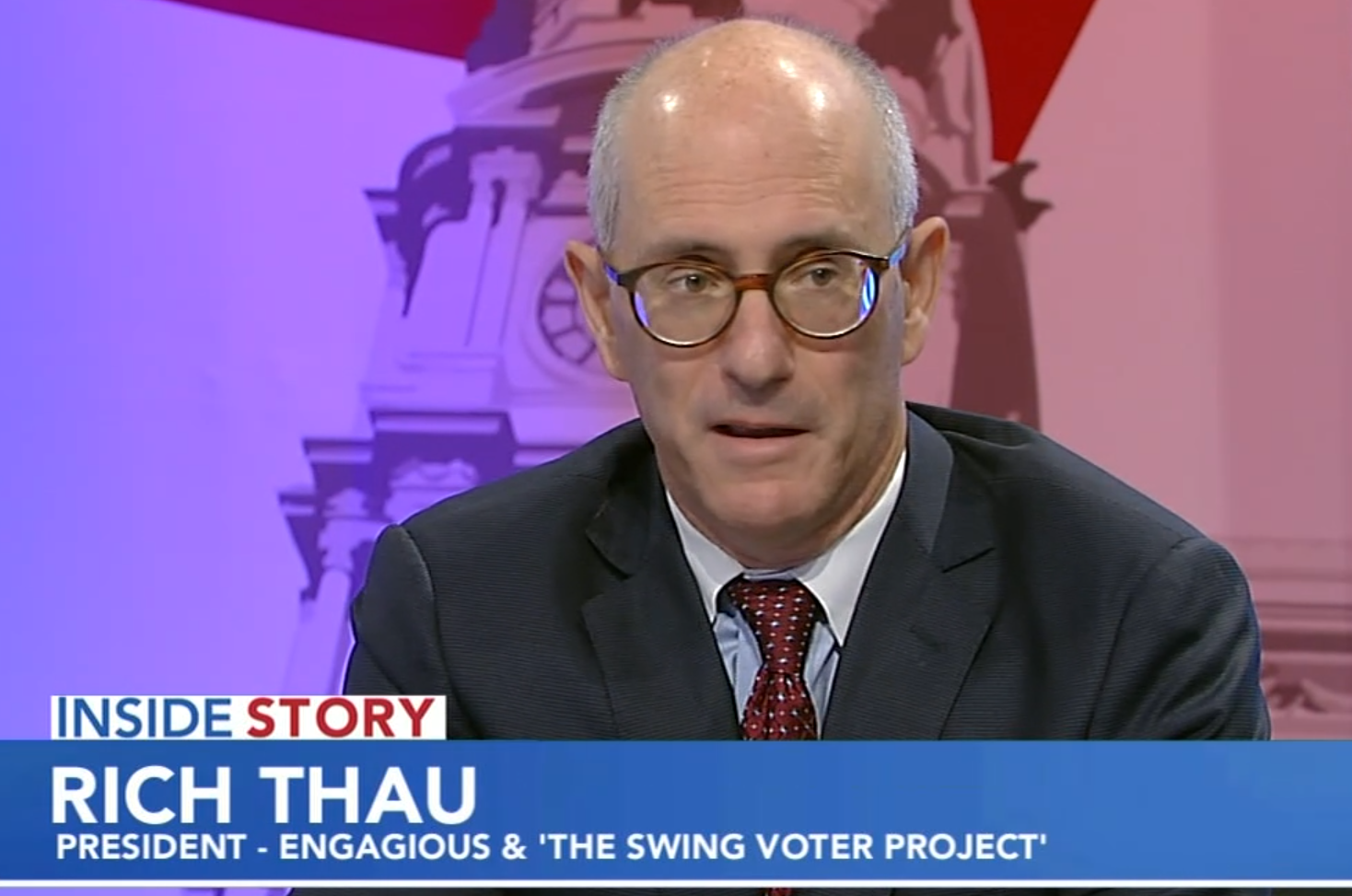

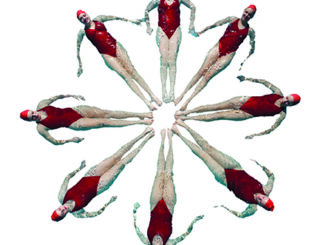


Be the first to comment